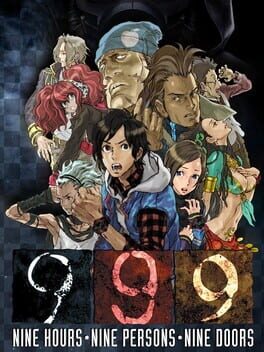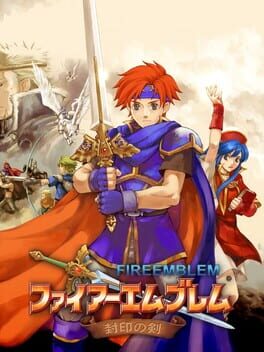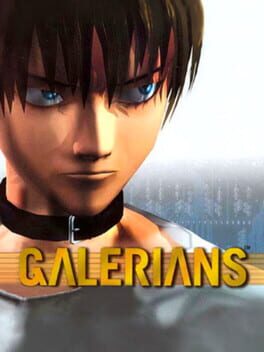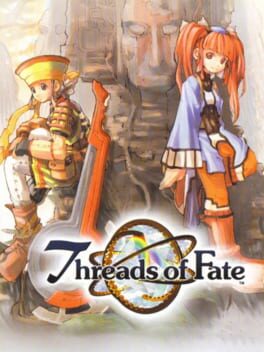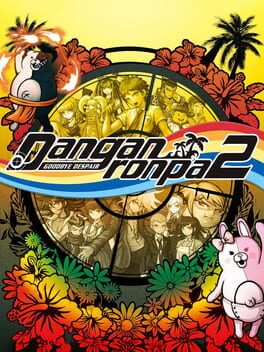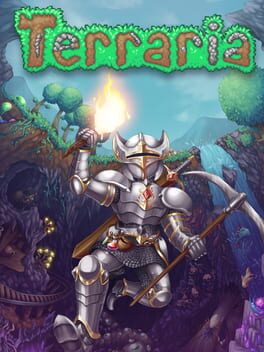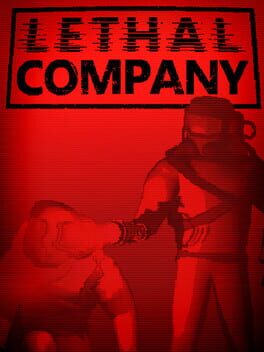aa_cadenza
This review contains spoilers
Typing out some quick initial thoughts after completing my first two routes today.
Playing this game on DS has a very tactile satisfaction to it. Reading ADV text on the top-screen and NVL text on the bottom has such a nice flow making everything a lot more fun to read. I really enjoyed how the game introduced it's FMVs through the first sequence of the game. The glass of the window shattering felt really exciting and grabbed my attention very well for the game's first escape room. There's a lot of instances of the game having more motion than I'd expect out of a visual novel, I adore how the sprites for the characters are animated and that really endeared me to all of them before I got to know much about them.
The main issue I was having with my first playthrough is that every time Santa or Lotus would monologue like "OoOoOoOOO~ Trust nobodyy!!" It felt like somewhat forced-tension. I never got the feeling that any of the characters had a motive to do anything but cooperate, doubly so because of the death of the 9th Player.
That is, until I reached my first ending.
Most of my choices thus far were motivated by trying to interact with as much of the characters as possible as safely as possible. Though, it seems Junpei had ended up with a bias for Clover by the end of my run. After exiting my final room, the rest of the characters were crowding around discussing their discovery of the 9th door. Up until this point I had assumed that each route would end with a different group of characters exiting through the 9th door and receiving a partial-answer to the game's unanswered questions. My expectations seemed to be adding up, seeing as 1 + 8 + 5 + 4 = Decimal Root 9 so I assumed things would wrap up rather smoothly and I'd get to move on to a new route.
Until Clover asked about the final room left unchecked. Room #2. As I got the dialogue option, I was thinking it'd just be another escape room to quickly knock out before finishing up the first route, so I absentmindedly went ahead with Clover's plan.
Four people, excluding Junpei, walk into an elevator, only one walks out.
Although I'd already been enjoying the game, this is where it started clicking. I had made the wrong assumptions about the game, expecting to be able to treat each individual route as a complete story, this ending punished me for that false assumption. Clover, who seemed to be no more than a side-character, an unremarkable one at that, murders Junpei and everyone else because I, as a player, didn't leave no stone unturned. On my 2nd run, I've been making choices I'd only make because of my knowledge of my first run, and I'm realizing the metanarrative the game is attempting to weave wherein the player is a stand-in for the "collective unconscious/crystalization of glycerin" themes it established in my first run.
Playing this game on DS has a very tactile satisfaction to it. Reading ADV text on the top-screen and NVL text on the bottom has such a nice flow making everything a lot more fun to read. I really enjoyed how the game introduced it's FMVs through the first sequence of the game. The glass of the window shattering felt really exciting and grabbed my attention very well for the game's first escape room. There's a lot of instances of the game having more motion than I'd expect out of a visual novel, I adore how the sprites for the characters are animated and that really endeared me to all of them before I got to know much about them.
The main issue I was having with my first playthrough is that every time Santa or Lotus would monologue like "OoOoOoOOO~ Trust nobodyy!!" It felt like somewhat forced-tension. I never got the feeling that any of the characters had a motive to do anything but cooperate, doubly so because of the death of the 9th Player.
That is, until I reached my first ending.
Most of my choices thus far were motivated by trying to interact with as much of the characters as possible as safely as possible. Though, it seems Junpei had ended up with a bias for Clover by the end of my run. After exiting my final room, the rest of the characters were crowding around discussing their discovery of the 9th door. Up until this point I had assumed that each route would end with a different group of characters exiting through the 9th door and receiving a partial-answer to the game's unanswered questions. My expectations seemed to be adding up, seeing as 1 + 8 + 5 + 4 = Decimal Root 9 so I assumed things would wrap up rather smoothly and I'd get to move on to a new route.
Until Clover asked about the final room left unchecked. Room #2. As I got the dialogue option, I was thinking it'd just be another escape room to quickly knock out before finishing up the first route, so I absentmindedly went ahead with Clover's plan.
Four people, excluding Junpei, walk into an elevator, only one walks out.
Although I'd already been enjoying the game, this is where it started clicking. I had made the wrong assumptions about the game, expecting to be able to treat each individual route as a complete story, this ending punished me for that false assumption. Clover, who seemed to be no more than a side-character, an unremarkable one at that, murders Junpei and everyone else because I, as a player, didn't leave no stone unturned. On my 2nd run, I've been making choices I'd only make because of my knowledge of my first run, and I'm realizing the metanarrative the game is attempting to weave wherein the player is a stand-in for the "collective unconscious/crystalization of glycerin" themes it established in my first run.
I wanted to get into FE with a less side-content heavy game so I could enjoy playing with permadeath more, so I went for the game with Roy because I guess he seemed cool. It's really funny how a game so snappy and quick to play can feel so... Boring?? I played like five minutes and Roy was way too boring to continue playing LOL. Every line of dialogue from Roy reads to me as "Okay, sure. Let me play Fire Emblem already." It's like he's a FEH player born in the wrong time-period. I decided to make Blazing Blade my first FE instead but maybe I'll give it a second chance someday.
1999
When I was younger, I would have automatically disregarded something with pre-rendered backgrounds and tank-controls, but my recent fascination with CRT-filters made me excited to challenge that idea. I had never heard of the game before and that excited me, I prefer to play games with no preconcieved ideas of what they "should" be.
Galerians quickly establishes itself as an uncomfortable, anxiety-inducing experience with its oppressive sound-design. While I walked around the first area to get used to the controls, I stumbled into a research document listing out drugs and their side-effects. The droning background noise went completely silent, only interrupted by an uncomfortably loud BEEP as I turned the page. Because I didn't immediately process it as a tutorial, I read and absorbed every word.
After a bit of wandering around, I was ready to progress and stepped into the next area, which immediately put Rion in the "Short"-state mentioned in the document I read before. Excited to immediately be so powerful, I cornered the scientist attacking me as he cowered. The gore in this game has such a punch to it, seeing your enemies sprawled out on the floor with Rion standing over them feels so violent and visceral, heightened by the prerendered backgrounds providing sort of a directorial feeling to every kill.
(WIP)
1999
AAAAGHH THIS GAME WAS SUCH AN AMAZING EXPERIENCE!!
Seeing a single gif of Love & Destroy a few months back sparked my imagination in a way that I haven't felt since being a kid and piecing together information about games from background clips in Youtube videos. This game alone motivated me to delve in to playing PSX games which, so far, has been a wonderful experience that's given me a lot of thoughts about what I like and dislike about game design.
The presentation of this game instantly gripped me with it's low-poly, low-res visuals being able to portray a sense of scale better than any video game I've ever seen (bar, BotW (namely, the dragons that fly around sometimes). L&D's limited 3D graphics with baked-in shading and no lighting-engine enable the player's imagination in a really powerful way that I haven't experienced before playing this game. When watching gameplay of Armored Core 6 after playing L&D, I was intrigued by how the lighting-engine, level-of-detail, and camera of AC6 did a disservice to the massive scale of the game's battles compared to L&D. This isn't to disparage AC6, as it's a great looking game in it's own right but to emphasize my shock that L&D is able to compete with it aesthetically in any way shape or form.
Often people look back on retro game aesthetics with the somewhat inaccurate opinion that they're "outdated". I think this is due to a multitude of factors, including but not limited to the scarcity of native-res, CRT-filtered footage of 6th generation games. I've noticed that a lot of "retro-inspired" games (namely, Pseudoregalia) underestimate 6th-gen's graphical capabilities and pull their aesthetic more from the N64 than the PSX. While the N64's graphics had limitations in cartridge-size making it read more as "charmingly crappy", what L&D showcases is that PSX graphics were not just good "for the time" but have their own strengths that can't be replicated with modern graphics.
While I do one day hope for a fan-translation, it would be inaccurate to say that playing the game untranslated didn't add to the experience for me. This game has the aura of an old, untranslated arcade cabinet in the back of the arcade that not many people care to give a try, but you feel like the coolest person in the arcade just for giving it a shot. The UI of the game uses english-text so it's rather easy as an english-speaker to get by without knowing any japanese, but not being able to parse the story at first added to a sense of intrigue about what the game could contain.
My first playthrough was actually a failed run, I thought the "virtual-mission" bosses were survival-missions, so I timed out on each. This lead to a series of cutscenes of the player-character sitting alone in his room looking somber, ending in a sudden apocalypse on the 5th mission. I assumed this was just how the game was meant to go, which made my 2nd playthrough that much sweeter when saw more cutscenes of the protagonist hanging out with the main girls. Despite not speaking a lick of japanese, getting these cutscenes was really exciting to me. Connecting the characters to each mech made me want to root for the girl I felt was the "strongest" (Kiki) because she helped me get through boss fights that I had initially failed. Even beyond that feeling of playing something "rare", the game being in japanese served as a testament to how well the gameplay loop was able to make me root for the characters.
Realizing after my first playthrough that there was a "cutscene gallery", I immediately became curious as to why I was still missing cutscenes with Kiki. A true ending? A New Game+? I wasn't entirely sure, but I became very determined to understand every facet of the game. I continued with a few more playthroughs trying to trial-and-error until I found what worked. Eventually, I figured that out, but there's still a soundbite gallery that I'm unsure how to complete. Because of the game's short runtime, I feel a lot more comfortable taking my time and experiencing multiple runs to find out all of it's mysteries. This game has quickly become an all-time favorite and an inspiration to me and I'm really glad that I acted on my curiosity for this game.
Seeing a single gif of Love & Destroy a few months back sparked my imagination in a way that I haven't felt since being a kid and piecing together information about games from background clips in Youtube videos. This game alone motivated me to delve in to playing PSX games which, so far, has been a wonderful experience that's given me a lot of thoughts about what I like and dislike about game design.
The presentation of this game instantly gripped me with it's low-poly, low-res visuals being able to portray a sense of scale better than any video game I've ever seen (bar, BotW (namely, the dragons that fly around sometimes). L&D's limited 3D graphics with baked-in shading and no lighting-engine enable the player's imagination in a really powerful way that I haven't experienced before playing this game. When watching gameplay of Armored Core 6 after playing L&D, I was intrigued by how the lighting-engine, level-of-detail, and camera of AC6 did a disservice to the massive scale of the game's battles compared to L&D. This isn't to disparage AC6, as it's a great looking game in it's own right but to emphasize my shock that L&D is able to compete with it aesthetically in any way shape or form.
Often people look back on retro game aesthetics with the somewhat inaccurate opinion that they're "outdated". I think this is due to a multitude of factors, including but not limited to the scarcity of native-res, CRT-filtered footage of 6th generation games. I've noticed that a lot of "retro-inspired" games (namely, Pseudoregalia) underestimate 6th-gen's graphical capabilities and pull their aesthetic more from the N64 than the PSX. While the N64's graphics had limitations in cartridge-size making it read more as "charmingly crappy", what L&D showcases is that PSX graphics were not just good "for the time" but have their own strengths that can't be replicated with modern graphics.
While I do one day hope for a fan-translation, it would be inaccurate to say that playing the game untranslated didn't add to the experience for me. This game has the aura of an old, untranslated arcade cabinet in the back of the arcade that not many people care to give a try, but you feel like the coolest person in the arcade just for giving it a shot. The UI of the game uses english-text so it's rather easy as an english-speaker to get by without knowing any japanese, but not being able to parse the story at first added to a sense of intrigue about what the game could contain.
My first playthrough was actually a failed run, I thought the "virtual-mission" bosses were survival-missions, so I timed out on each. This lead to a series of cutscenes of the player-character sitting alone in his room looking somber, ending in a sudden apocalypse on the 5th mission. I assumed this was just how the game was meant to go, which made my 2nd playthrough that much sweeter when saw more cutscenes of the protagonist hanging out with the main girls. Despite not speaking a lick of japanese, getting these cutscenes was really exciting to me. Connecting the characters to each mech made me want to root for the girl I felt was the "strongest" (Kiki) because she helped me get through boss fights that I had initially failed. Even beyond that feeling of playing something "rare", the game being in japanese served as a testament to how well the gameplay loop was able to make me root for the characters.
Realizing after my first playthrough that there was a "cutscene gallery", I immediately became curious as to why I was still missing cutscenes with Kiki. A true ending? A New Game+? I wasn't entirely sure, but I became very determined to understand every facet of the game. I continued with a few more playthroughs trying to trial-and-error until I found what worked. Eventually, I figured that out, but there's still a soundbite gallery that I'm unsure how to complete. Because of the game's short runtime, I feel a lot more comfortable taking my time and experiencing multiple runs to find out all of it's mysteries. This game has quickly become an all-time favorite and an inspiration to me and I'm really glad that I acted on my curiosity for this game.
1999
This game fucking rules. My God.
The experience of playing this game in a voice call with me and my friends voicing each character is an unmatched life experience I will remember forever. I understand how some things about the writing can be grating, but since every character is a character who can DIE the annoyance increases the tension rather than annoying me. There were a few instances where me and my friends were devastated because someone we hate lived while someone we loved died.
I'm slightly biased because of HOW I experienced this game, but if you're able to play it with friends, PLEASE DO.
The experience of playing this game in a voice call with me and my friends voicing each character is an unmatched life experience I will remember forever. I understand how some things about the writing can be grating, but since every character is a character who can DIE the annoyance increases the tension rather than annoying me. There were a few instances where me and my friends were devastated because someone we hate lived while someone we loved died.
I'm slightly biased because of HOW I experienced this game, but if you're able to play it with friends, PLEASE DO.
2011
2023
